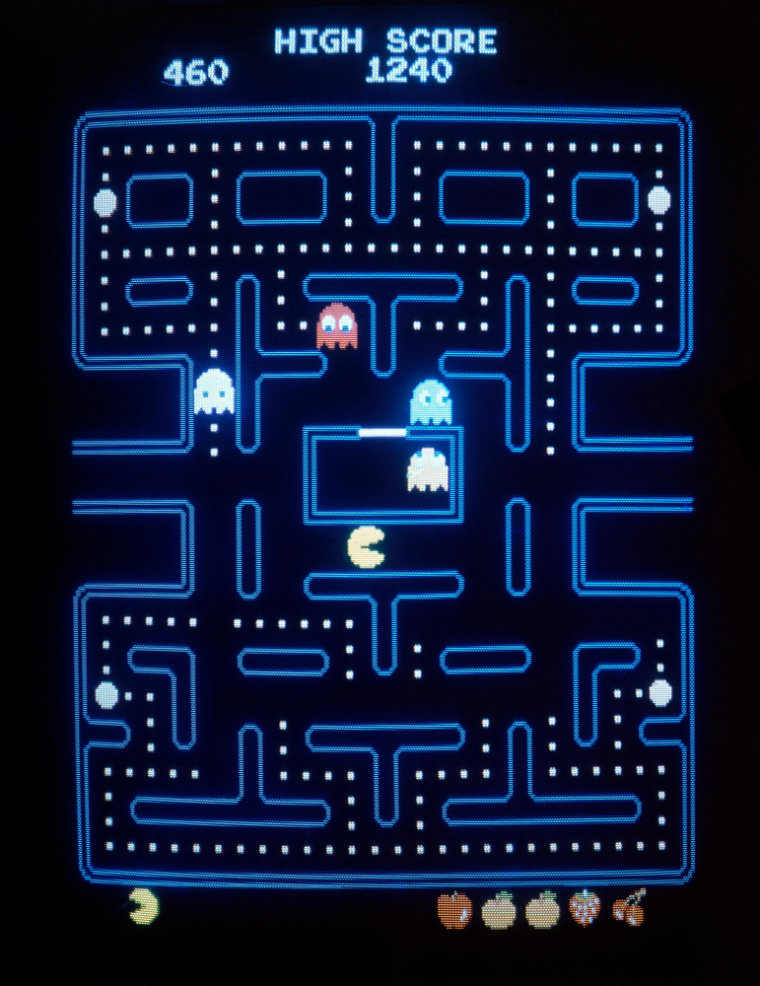For a video game, Pac-Man is getting downright old. The ghost-wary hero with an insatiable appetite for dots turns 25 this month.
From the early 1980s "Pac-Mania" to today's endless sequels and rip-offs, the original master of maze management remains a bright yellow circle on the cultural radar.
But there was more to Pac-Man's broad appeal than eating dots and dodging on-screen archrivals Blinky, Pinky, Inky and Clyde.
"This was the first time a player took on a persona in the game. Instead of controlling inanimate objects like tanks, paddles and missile bases, players now controlled a `living' creature," says Leonard Herman, author of "Phoenix: The Rise and Fall of Videogames." "It was something that people could identify, like a hero."
It all began in Japan, when Toru Iwatani, a young designer at Namco, caught inspiration from a pizza that was missing a slice. Puck-Man, as it was originally called, was born. Because of obvious similarities to a certain four-letter profanity, "Puck" became "Pac" when it debuted in the U.S. in 1980.
Its success spawned a romantic interest (Ms. Pac-Man), a child (Junior Pac-Man), a cartoon show and hundreds of licensed products. The phenomenon even reached the pop music charts when "Pac-Man Fever" by Buckner & Garcia drove us all crazy in 1982.
Billy Williams, the first and only person known to play a perfect game of Pac-Man (he racked up a score of 3,333,360 after clearing all 256 levels in more than six hours in 1999, according to video game record keepers Twin Galaxies) says Pac's popularity was in its nonviolent simplicity.
"The fact that it's cute, it's almost like a hero running around the board from bad guys. It's not an appeal based on violence," the 39-year-old from Hollywood, Fla., said. "Whether it was an 80-year-old lady or a kid, everyone could adapt to the Pac-Man world."
Billions of quarters later, Pac-Man's influence continues.
As part of a final project for a class in New York University's Interactive Telecommunications graduate program last year, students with cell phones and Wi-Fi Internet connections mimicked the game, tracking their movements on a grid spanning several city blocks.
They called this analog re-enactment, where four people dressed as ghosts searched for Pac-Man on the streets around New York's Washington Square Park, Pac-Manhattan.
"We never had anyone clear the entire board," said Frank Lantz, a game designer who taught the course.
Namco, which can't offer an exact date for Pac-Man's birth, sold 293,822 of the arcade machines between 1980 and '87. It shows no signs of giving up on the franchise.
The company has several new games this year, including "Pac-Mania 3D," "Pac-Man World 3," Pac-Pix" and "Pac-Man Pinball." It even began making a special 25th anniversary edition of the old arcade machine.
"People say, ‘Who buys Pac-Man?' It's one of the few games where the answer is, ‘Everyone,'" said Scott Rubin, general manager of Namco America.
Herman said Pac-Man's place in video game history is forever secure, saying: "It was a milestone of video game history."
